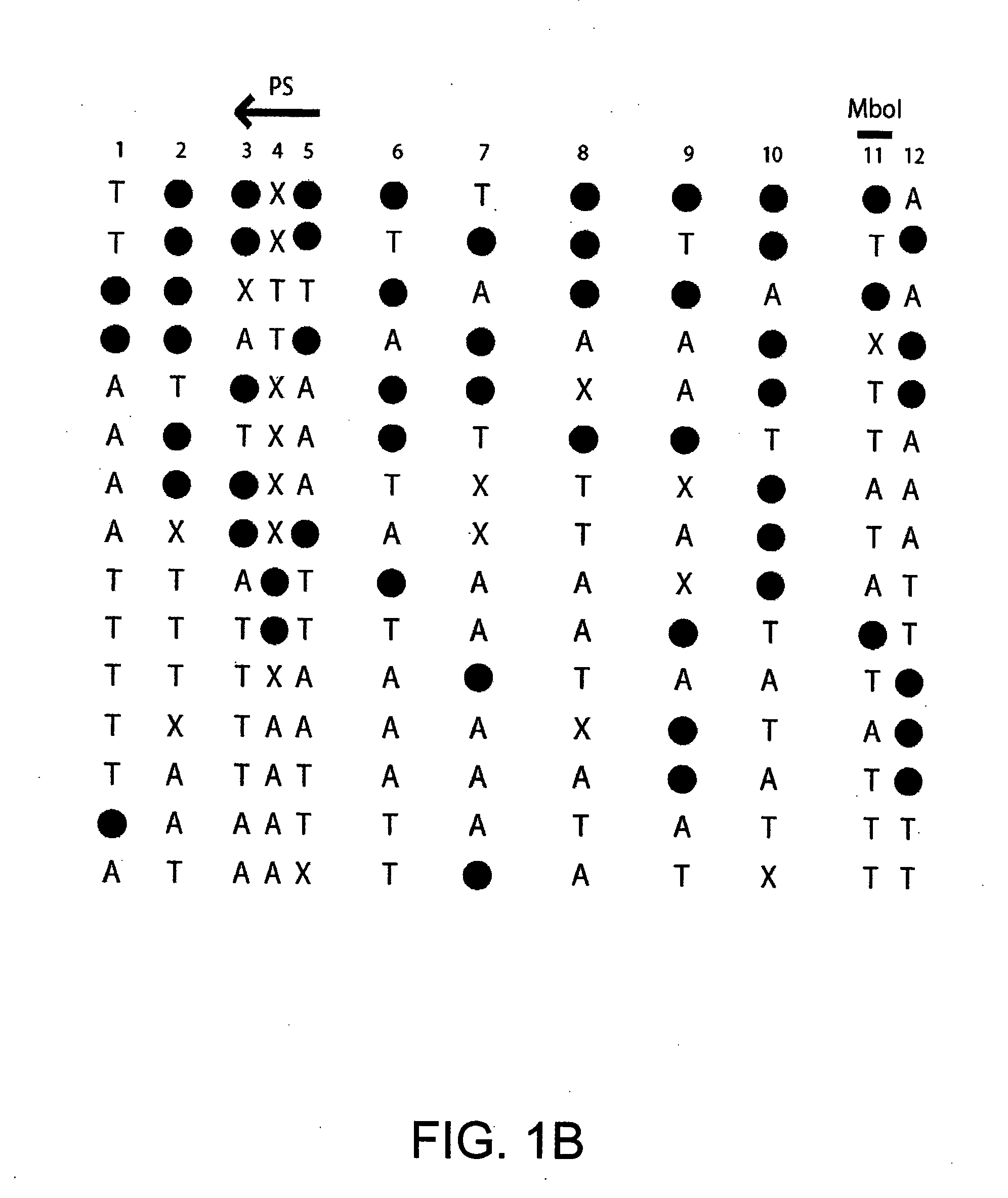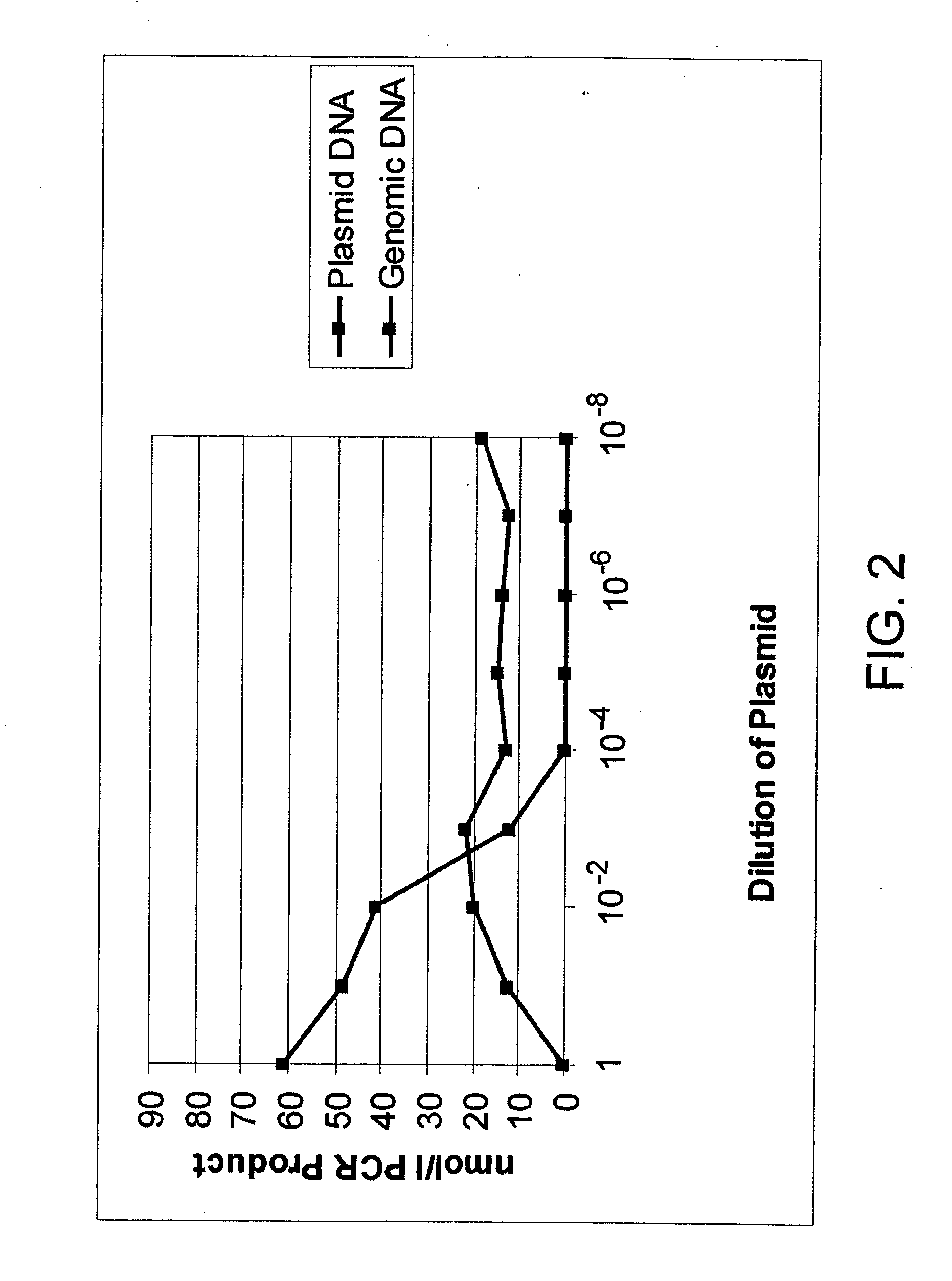Global DNA methylation assessment using bisulfite PCR
a technology of methylation assessment and bisulfite, applied in the field of molecular biology and genetics, can solve the problems of large amounts of dna, laborious and/or requiring large amounts of good quality dna, and limited methods
- Summary
- Abstract
- Description
- Claims
- Application Information
AI Technical Summary
Benefits of technology
Problems solved by technology
Method used
Image
Examples
example 1
DNA and Cell Lines
[0085] Hct116, RKO and SW48, colon cancer cell lines (American Type Culture Collection, Manassas, Va.), were cultured using standard methods. Cells were treated with 5 μM 5-aza-2′deoxycytidine (DAC) for three days prior to being harvested. DNA from cell lines and peripheral blood leukocytes was extracted using phenol-chloroform extraction methods well known to one with skill on the art.
example 2
Bisulfite Treatment
[0086] Bisulfite modification of genomic DNA is known in the art (see Clark et. al, 1994). In brief, 1.5 μg prepared 10 mM hydroquinone (Sigma) and 520 μl of 3M Sodium Bisulfite (Sigma) at pH=5.0 were added and mixed. The samples were overlayed with mineral oil to prevent evaporation and incubated at 50° C. for 16 hours. The bisulfite treated DNA was isolated using Wizard DNA Clean-Up System (Promega). The DNA was eluted by 50 μl of warm water and 5.5 μl of 3M NaOH were added for 5 minutes. The DNA was ethanol precipitated with glycogen as a carrier and resuspended in 20 μl water. Bisulfite treated DNA was stored at −20° C. until ready for use.
example 3
PCR of Repetitive Elements
[0087] Methylation analysis of Alu repetitive elements was performed initially by the COBRA assay. A 25 μl PCR reaction was carried out in 60 mM Tris-HCl pH=9.5, 15 mM ammonium sulfate, 5.5 mM MgCl2, 10% DMSO, 1 mM dNTP mix, 1 unit of Taq polymerase, 50 pmol of the forward primer (5′-GATCTTTTTATTAAAAATATAAAAATTAGT-3′) (SEQ ID NO: 1), 50 pmol of the reverse primer (5′-GATCCCAAACTAAAATACAATAA-3′) (SEQ ID NO: 2), and approximately 50 ng of bisulfite treated genomic DNA. The best COBRA results were obtained if the PCR primers contained a restriction site on the 5′ end that would be recognized by the COBRA restriction enzyme, which digested non-specific PCR products and helped prevent primer dimer formation. PCR cycling conditions were 96° C. for 90 seconds, 43° C. for 60 seconds, and 72° C. for 120 seconds for 27 cycles. The PCR product was then digested with 10 U of MboI. The digested PCR product was then separated by polyacrylamide gel electrophoresis or the...
PUM
| Property | Measurement | Unit |
|---|---|---|
| Fraction | aaaaa | aaaaa |
| Fraction | aaaaa | aaaaa |
| Fraction | aaaaa | aaaaa |
Abstract
Description
Claims
Application Information
 Login to View More
Login to View More - R&D
- Intellectual Property
- Life Sciences
- Materials
- Tech Scout
- Unparalleled Data Quality
- Higher Quality Content
- 60% Fewer Hallucinations
Browse by: Latest US Patents, China's latest patents, Technical Efficacy Thesaurus, Application Domain, Technology Topic, Popular Technical Reports.
© 2025 PatSnap. All rights reserved.Legal|Privacy policy|Modern Slavery Act Transparency Statement|Sitemap|About US| Contact US: help@patsnap.com



